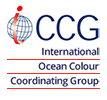The IOCCG bibliography is updated periodically when new references are submitted by readers, especially references that are published open access. Another useful ocean colour bibliography is the searchable Historic Ocean Colour Archive assembled by Marcel Wernand, with articles and books written between the 17th and early 20th century.
If you would like to submit a peer-reviewed open access publication to be included in the Ocean Colour Bibliography, please send the reference to Raisha Lovindeer using the following format: Lastname1, Initials1., Lastname2, Initials2., etc. (DATE). Full title of publication, Journal Abbreviation, Volume, Page numbers, DOI as a link. Please also check that the reference is not already in the database (search by first author). It is not necessary to send the PDF file as an attachment. Note that only peer-reviewed articles will be accepted.
If you would like to view recently-published papers, enter the current year in “Search by Keyword”. You can also search the database using keywords or the author’s last name. For papers dealing with Remote Sensing of Marine Litter and Debris, use the keyword “RSMLD”. You can also view the Datasets Bibliography for remote sensing and marine litter and debris.
Bibliography
Platt, T., Fuentes-Yaco, C., and Frank, K. (2003). Spring algal bloom and larval fish survival. Nature, 423: 398-399. [pdf file]
Platt, T., Sathyendranath, S. and Longhurst, A. (1995). Remote sensing of primary production in the ocean: Promise and fulfilment. Phil. Trans. R. Soc. Lond. B., 348: 191-202.
Platt, T., Sathyendranath, S., and Fuentes-Yaco, C. (2007). Biological oceanography and fisheries management: perspective after 10 years. ICES Journal of Marine Science, 64: 863–869.
Platt, T., Sathyendranath, S., Caverhill, C.M. and Lewis, M.R. (1988). Ocean primary production and available light: Further algorithms for remote sensing. Deep-Sea Res. I, 35: 855-879.
Platt, T., Sathyendraneth, S. and Ravindran, P. (1990). Primary production by phytoplankton : analytic solutions for daily rates per unit are of water surface. Proc. R. Soc. B, 241: 101-111.
Platt, T., White, G.N., Zhai, L., Sathyendranath, S. and Roy, S. (2009). The phenology of phytoplankton blooms: Ecosystem indicators from remote sensing doi:10.1016/j.ecolmodel.2008.11.022
Plummer, S.E. (2000). Perspectives on combining ecological process models and remotely sensed data. Ecol. Model., 129: 169-186.
Podestá, G.P., Brown, O.B. and Evans, R.H. (1991). The annual cycle of satellite-derived sea surface temperature in the southwestern Atlantic ocean. J. Climate, 4: 457-467.
Polovina J.J. and Woodworth, P.A. (2012). Declines in phytoplankton cell size in the subtropical oceans estimated from satellite remotely-sensed temperature and chlorophyll, 1998–2007. Deep-Sea Research II, 77–80: 82–88. [PDF File].
Polovina, J.J., Howell,E.A., and Abecassis, M. (2008). Ocean’s least productive waters are expanding. Geophysical Research Letters, 35: L03618, doi:10.1029/2007GL031745. [Article].
Polovina, J.J., Kobayashi, D.R., Parker, D.M., Seki, M.P. and Balazs, G.H. (2000). Turtles on the edge: movement of loggerhead turtles (Caretta caretta) along oceanic fronts, spanning longline fishing grounds in the central North Pacific, 1997-1998. Fish. Oceanogr., 9: 71-82.
Poryvkina, L., Babichenko, S., Kaitala, S., Kuosa, H. and Shalapjonok, A. (1994). Spectral fluorescence signatures in the characterization of phytoplankton community composition. J. Plankton Res., 16: 1315-1327.
Poryvkina, L.V., Babichenko, S.M. and Lapimaa, J.J. (1992). Spectral variability of humus substance in marine ecosystems. Ambio,21: 465-467.
Poteau, A., E. Boss, and H. Claustre (2017). Particulate concentration and seasonal dynamics in the mesopelagic ocean based on the backscattering coefficient measured with Biogeochemical-Argo floats. Geophys. Res. Lett. , 44, doi:10.1002/2017GL073949.
Potter, C.S., Randerson, J.T., Field, C.B., Matson, P.A., Vitousek, P.M., Mooney, H.A. and Klooster, S.A. (1993). Terrestrial ecosystem production: A process model based on global satellite and surface data. Global Biogeochem. Cycles, 7: 811-841.
Pottier, C., Garçon, V., Larnicol, G., Sudre, J., Schaeffer, P. and Le Traon, P-Y. (2006). Merging SeaWiFS and MODIS/Aqua ocean color data in North and Equatorial Atlantic using weighted averaging and objective analysis. IEEE Trans. Geoscience Remote Sens., 44(1): 3436-3451. [PDF file]
Poulin, C., Antoine, D., & Huot, Y. (2018). Diurnal variations of the optical properties of phytoplankton in a laboratory experiment and their implication for using inherent optical properties to measure biomass. Optics express, 26(2), 711-729. doi:10.1364/OE.26.000711
Poulin, C., Zhang, X., Yang, P., & Huot, Y. (2018). Diel variations of the attenuation, backscattering and absorption coefficients of four phytoplankton species and comparison with spherical, coated spherical and hexahedral particle optical models. JQSRT. Published online on June 15th 2018. doi:10.1016/j.jqsrt.2018.05.035
Pradhan, Y., Mohan, M., Sengupta, D. and Nayak, S. (2005). Radiant heating rates and surface biology during the Arabian Sea Monsoon Experiment. J. Geophys. Eng., 2: 16-22, doi:10.1088/1742-2132/2/1/003
Pradhan, Y., Rajawat, A.S. and. Nayak S.R (2004). Application of IRS-P4 OCM data to study the impact of tidal propagation on sediment dynamics in the Gulf of Kachchh. Indian J. Mar. Sci., 33 (2): 129-137.
Pradhan, Y., Thomaskutty, A.V., Rajawat, A.S. and Nayak,S. (2005). Improved regional algorithm to retrieve total suspended particulate matter using IRS-P4 ocean colour monitor data,. J. Opt. A: Pure Appl. Opt., 7: 343-349, doi:10.1088/1464-4258/7/7/012
Prahm, L.P., Berkowicz, R. and Christensen, O. (1979). Generalization of K theory for turbulent diffusion. Part II: spectral diffusivity model for plume dispersion. J. Appl. Meteorol., 18: 273-282.
Prasad, A.K. and R.P. Singh (2007). Features of hurricane Katrina using multi sensor data, International Journal of Remote Sensing, 28: 4709-4713.
Prasad, J.S., Rajawat, A.S., Pradhan, Y., Chauhan, O.S., and Nayak, S. (2002). Retrieval of Sea surface velocities using sequential Ocean Colour Monitor (OCM) data. Proc. Indian Acad. Sci. (Earth Planet. Sci.), 111(3): 189-195.
Prasad, K.S., Bernstein, R.L., Kahru, M., and Mitchell, B.G. (1998). Ocean color algorithms for estimating water clarity (Secchi depth) from SeaWiFS. J. Adv. Mar. Sci. Tech. Soci., 4(2): 301-306.
Pravin, D.J., Shanmugam, P. (2014). A new theory and its application to remove the effect of surface-reflected light in above-surface radiance data from clear and turbid waters. J. Quant. Spectrosc. Ra. 142: 75–9. [ Abstract].
Prézelin, B.B. and Glover, H.E. (1991). Variability in time/space estimates of phytoplankton, biomass and productivity in the Sargasso Sea. J. Plankton Res., 13: 45-67.
Prieur, L. and Sathyendranath, S. (1981). An optical classification of coastal and oceanic waters based on the specific spectral absorption curves of phytoplankton pigments, dissolved organic matter, and other particulate materials. Limnol. Oceanogr., 26: 671-689.
Prieur, L., Bethoux, J.P., Albuisson, M., Wald, L. and Monget, J.M. (1981). A comparison between infrared satellite images and sea truth measurements. In: Oceanography From Space, J.F.R. Gower (ed.), Plenum Publishing Corporation, 159-167.
Qi, L., Wang, M., Hu, C., Jiao, J. and Park, Y.-J. (2024) Marine debris induced by the Great East Japan Earthquake and Tsunami: A multi-sensor remote sensing assessment. Mar. Pollut. Bull., vol .207, pp. 116888, https://doi.org/10.1016/j.marpolbul.2024.116888
Qi, L., and C. Hu (2021). To what extent can Ulva and Sargassum be detected and separated in satellite imagery? Harmful Algae, 103, 102001,https://doi.org/10.
Qi, L., C. Hu, K. Mikelsons, M. Wang, V. Lance, S. Sun, B. B. Barnes, J. Zhao, and D. V. der Zande (2020). In search of floating algae and other organisms in global oceans and lakes. Remote Sens. Environ., 239, 111659, https://doi.org/10.1016/j.rse.
Qi, L., Hu, C., Barnes, B. B., Lapointe, B. E., Chen, Y., Xie, Y., & Wang, M. (2022). Climate and anthropogenic controls of seaweed expansions in the East China Sea and Yellow Sea. Geophysical Research Letters, 49, e2022GL098185. https://doi.
Qi, L., Hu, C., Wang, M., Shang, S., and Wilson, C. (2017). Floating algae blooms in the East China Sea. Geophysical Research Letters, 44: 11,501–11,509. https://doi.org/10.1002/2017GL075525
Qi, L., M. Wang, and C. Hu (2023). Uncertainties in MODIS-Derived Ulva Prolifera Amounts in the Yellow Sea: A Systematic Evaluation Using Sentinel-2/MSI Observations. IEEE Geosciences and Remote Sens. Lett, 20, 1501805, https://doi.org/10.
Qi, L., M. Wang, C. Hu, and B. Holt (2022). On the capacity of Sentinel-1 synthetic aperture radar in detecting floating macroalgae and other floating matters. Remote Sens. Environ., 280, 113188, https://doi.org/10.1016/j.rse.2022.113188.
Qi, L., P. Cheng, M. Wang, C. Hu, Y. Xie, and K. Mao (2023). Where does floating Sargassum in the East China Sea come from? Harmful Algae, 129, 102523, https://doi.org/10.
Qi, L., Wang, M., Hu, C., Capone, D. G., Subramaniam, A., Carpenter, E. J., & Xie, Y. (2023). Trichodesmium around Australia: A view from space. Geophysical Research Letters, 50(16), e2023GL104092. https://doi.org/10.1029/2023GL104092
Qi, L., Y. Yao, D. E. English, R. Ma, J. Luft, and C. Hu (2021). Remote sensing of brine shrimp cysts in salt lakes. Remote Sens. Environ., 266, 112695, https://doi.org/10.1016/j.rse.
Qi, Lin, Chuanmin Hu, Hongtao Duan, Jennifer Cannizzaro, Ronghua Ma (2014). A novel MERIS algorithm to derive cyanobacterial phycocyanin pigment concentrations in a eutrophic lake: Theoretical basis and practical considerations. Remote Sensing of Environment 154: 298-317. doi.org/10.1016/j.rse.2014.08.026. [Full article]
Qi, L., Tsai, S-F., Chen, Y., Le, C. and Hu, C. (2019). In search of red Noctiluca scintillans blooms in the East China Sea. Research Letter, 46: 11 https://doi.org/10.1029/2019GL082667
Qian, S-E. (2021). Hyperspectral satellites, evolution and development history. IEEE Journal of Selected Topics in Applied Earth Observations and Remote Sensing, DOI 10.1109/JSTARS.2021.3090256.
Qing, S., A, R., Shun, B., Zhao, W., Bao, Y., Hao, Y. (2020). Distinguishing and mapping of aquatic vegetations and yellow algae bloom with Landsat satellite data in a complex shallow Lake, China during 1986–2018. Ecological Indicators, 112, 106073. https://doi.org/10.1016/j.ecolind.2020.106073
Qing, S., Cui, T., Lai, Q., Bao, Y., Diao, R., Yue, Y., and Hao, Y. (2021). Improving water clarity remote sensing retrieval in complex coastal and inland waters with modified absorption estimation and optical water classification using Sentinel-2 MSI. International Journal of Applied Earth Observation and Geoinformation, 102, 102377. https://doi.org/10.1016/j.jag.2021.102377
Qing, S., Cui, T., Tang, J., Qing, S., Liu, R., and Bao, Y. (2022). An optical water classification and quality control model (OC_QC model) for spectral diffuse attenuation coefficient. ISPRS Journal of Photogrammetry and Remote Sensing, 189: 255-271. https://doi.org/10.1016/j.isprsjprs.2022.05.006
Qing, S., Tang, J., Cui, T., and Zhang, J. (2011). Retrieval of inherent optical properties in the Yellow Sea and the East China Sea by QAA. Chinese Journal of Oceanology and Limnology, 29(1): 33-45. https://doi.org/10.1007/s00343-011-9967-z
Qing, S., Zhang, J., Cui, T., and Bao, Y. (2012). Remote sensing retrieval of total absorption coefficient in the Bohai Sea. Chinese Journal of Oceanology and Limnology, 30(5): 64-71. https://doi.org/10.1007/s00343-012-1238-0
Qing, S., Zhang, J., Cui, T., and Bao, Y. (2013). Retrieval of sea surface salinity with MERIS and MODIS data in the Bohai Sea. Remote sensing of Environment, 136: 117-125. https://doi.org/10.1016/j.rse.2013.04.016
Qing, S., Zhang, J., Cui, T., and Bao, Y. (2014). Remote sensing retrieval of inorganic suspended particle size in the Bohai Sea. Continental Shelf Research, 73: 64-71. https://doi.org/10.1016/j.csr.2013.11.020
Quenzel, H. (1983). Scattering, absorption, emission and radiative transfer in the atmosphere. In: Optical Remote Sensing of Air Pollution, P. Camagni and S. Sandroni (eds.), Elsevier Science Publishers B.V., Amsterdam, 1-25.


 The sixth International Ocean Colour Science (IOCS) meeting will take place in Darmstadt, Germany from 1 – 4 December 2025, hosted by EUMETSAT and ESA with support from other agencies.
The sixth International Ocean Colour Science (IOCS) meeting will take place in Darmstadt, Germany from 1 – 4 December 2025, hosted by EUMETSAT and ESA with support from other agencies.